6 Classic Muscle Cars That Aren’t American

What was the first muscle car? In America that’s a hotly-debated question among enthusiasts, and depending on where you’re at, could possibly even lead to a fist fight. To even begin answering that question, one must consider the definition of a muscle car. Some say it’s a basic concept of a big V8 in a small car. Others get far more specific, claiming that muscle cars can only be American-built from the 1960s or early 1970s, running a thumping pushrod V8 to drive a solid rear axle in a two-door, body-on-frame car, regardless of size. I’ve actually seen people come to fisticuffs over that, despite the fact that such an absurd definition excludes the unibody Dodge Charger, perhaps the most famous vintage muscle car in the world.
Sticking to general definitions, many people consider the mid-sized 1949 Oldsmobile Rocket 88 as the first true muscle car. Whereas similar sized models of the day had six-cylinder engines, it got a V8 stuffed under the bonnet.
Flash forward a few years to 1955 and Chrysler’s 300-series “letter cars” with early Hemi engines - that’s where I personally feel the muscle car was born because these cars actually had serious power. But they were also limited-production machines, so some point to the 1955 Chevy with its optional V8 as the beginning. Others jump a few years forward to the 1964 Pontiac GTO as the original muscle car - the machine that actually began the muscle car era.
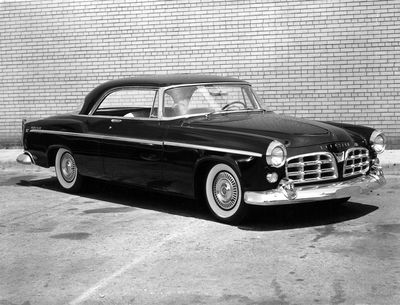
Whatever the case, there’s really no question that muscle cars began in America. And they certainly didn’t stay there - today there are all kinds of cars with juvenile-delinquent attitudes turning the rear wheels with thumping V8 engines. But you should know that the original muscle car era wasn’t the exclusive domain of American manufacturers. Our Australian friends can certainly attest to this, but they weren’t the only ones outside America in that original golden age with a few muscle car surprises worth mentioning.
Ford Falcon XB GT
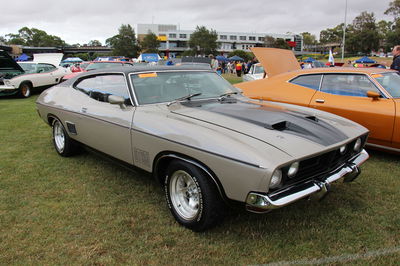
I need to start with a personal favourite of mine. Okay, it’s not just a favourite - when my ship comes in I will have a 1974 XB GT, and it may or may not be dressed up as the original Mad Max interceptor. While it’s true that the Ford Falcon started life as an American model in the 1960s, it became exclusively Australian in 1972 with the Falcon XA and it was epic. The minor changes to the XB series in 1973 made it even better, and while American muscle cars were being castrated through emission regulations, the Falcon XB GT soldiered on through the mid-1970s with a 300bhp 5.8-litre V8.
Holden Monaro GTS
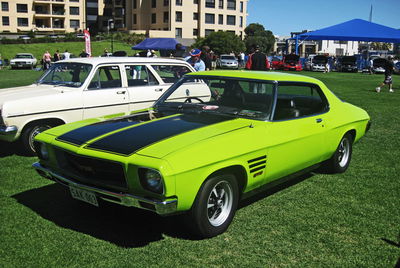
With ties to General Motors, Australian-based Holden had access to GM’s muscle car engines and they put them to good use in the Monaro. The GTS hit the scene in in 1968 running Chevrolet’s well-known 327 cubic-inch (5.4-litre) V8. That was soon replaced with a 300bhp 5.7-litre V8, and Monaros quickly became racing legends in the Australian Touring Car Championship. I’m a particular fan of the second-generation HQ cars that debuted in 1971, and I’m not the only one. These cars have become quite collectible thanks to their combination of power, great looks and rarity.
Chrysler Valiant Charger R/T
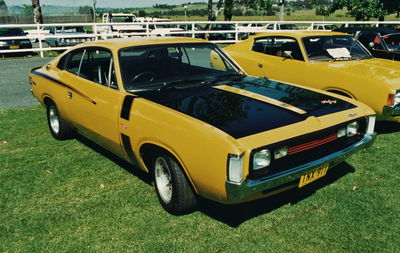
The Chrysler Valiant became a stand-alone Australian design in 1971, and among the various sub models was a name already notorious with muscle - the Charger. It wasn’t quite as aggressive as its American counterpart, but the high-output R/T matched the competition from Ford and Holden with a - wait for it - 4.3-litre Hemi straight-six engine. Straight six? That should disqualify the Charger from muscle car status, but here’s the thing. You could get a Valiant Charger 770 with either a 318 (5.2-litre) or 340 (5.6-litre) V8, the latter of which made 275bhp. But the R/T with the Australian-designed Hemi six was a legend; it made 302bhp, and with less weight up front they actually handled pretty well in addition to being faster.
Jensen Interceptor
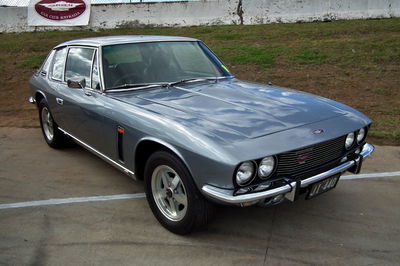
You knew the Jensen had to be on this list, right? Muscular V8 power with a live rear axle; sounds like something straight from Detroit, but of course the Interceptor was hand-built in England. The engine was a product of Detroit though, in this case a 383 cubic-inch (6.2-litre) Chrysler V8 for the early cars and a 440 cubic-inch (7.2-litre) V8 starting in 1971.
It should be noted that the 1971 Jensen Interceptor with the 330bhp 440 “six pack” (three two-barrel carburettors) was Jensen’s most powerful car ever built. Only 232 were made, and as with most cars of the era, power gradually declined until the Interceptor - as well as Jensen - went away completely in 1976.
Here’s something you probably weren’t expecting. Today Mercedes is all about hairy-chested V8 muscle in a wide range of cars, courtesy of in-house tuner AMG. In 1967, Merc engineers decided to pull an American trick by yanking the six-cylinder mill from the 300SEL and swapping in the 6.3-litre V8 from its much larger 600 limousine. With roughly 250bhp, the V8-powered 300SEL could hit 60mph in just over six seconds and breech 140mph.
When it debuted in 1968 it was the fastest four-door in the world, and when a young upstart company called AMG tweaked it for racing, the car was literally too fast (and admittedly too heavy) for the racing tyres of the day.
If the straight-six Valiant Charger raised some muscle car eyebrows, I suspect the Italian-built mid-engined Pantera could spark a revolt. Yes, on paper the Pantera is far more supercar than muscle car, but cars are more than published facts and statistics. It was a standout hit in 1971 when it first debuted, but for the Pantera’s entire 20-year run the mid-mounted engine was always a Ford 5.8-litre pushrod V8.
On the road, getting the most from the Pantera was less about finesse and more about manhandling the thing into submission. It might have Italian sex appeal, but even in the sleek design there exists a curious bulkiness that ties to its muscle car heart. I’m not sure there’s a category called super muscle cars, but if there were, the Pantera would be its leader.














Comments
i shot this a while ago. Personally i think the pantera is one of the best looking supercars of all time.
what about the ford capri?
Ford Capri Perana, with the 302 V8?
What about Chevrolet Opala SS?
ford capri?
I’m sorry alfa montreal anybody?!
DeTomasso italian?dis is BS that car is argentinian af
Jensen, I can accept that, It’s more of a gran tourer than muscle, but “close enough”
DeTomaso, Yes it has muscle car heart, but it’s not muscle car. It’s purely GT/ early Super car.
Valiant Charger, Despite it’s not being V8 I can still somehow accept.
But on to the interesting side of things.I could consider later BMW M3’s and 600 series somehow “muscular” and of course the Mercedes AMG models. The difference is that with the original American Muscle cars they were “power to the people” cars, which were aimed to be sold as low price as possible. which caused the somewhat lacking suspnesion and brake upgrades compared to the power gains of the engine. One of the cheapest midsize cars you could buy in late 60’s was Plymoulth Road Runner Costing under $3000 let’s put it todays money Now I’m swapping to euros and price ranges of my own country.
Currently cheapers new M3/M4 you can get costs over 117.000€ (M3 sedan) And cheapest 300 series will cost just under 38.000€ Now if I could get that cheapest model with only modification being M3 engine with around 50.000-60.000€ I wouldn’t think twice which car I would get. And that could be called a “muscle car” as that’s exactly what it would be. Of couse I would have bunch of options which would obviously make it more expensive until it would become M3 essentially that’s how muscle cars were born. Lightweight body, Big and powerful engine.
How about Corvette and Viper, To be honest I never saw them as mucle cars. Being 2 seaters, and actually pretty well performing cars. Let’s remember Corvetteäs Debute on LeMans on 50’s 4 cars straight from showroom foor, 1 was wrecked, 1 was incoved in an accident but finshed, Highest standing corvette finished 8th. behind bunch of ferraris. which only race teams could get. while porsche’s, Lotuses, and other european cars were DNFing due mechanical difficulties. Only car you could get as non racing driver was Corvette. Which by the way was OUTHANDLING the european racecars.
I have a HQ GTS, you jealous? :)
No gtho phase 3 falcon also the fast charger was the e49 with its 265 hemi and triple webber carbs was the fastest australian down the 1/4 when new also missing the vl turbo then theres all the hdt cars then hsv’s fte fords and fpvs even the djr turbo falcons
Pagination